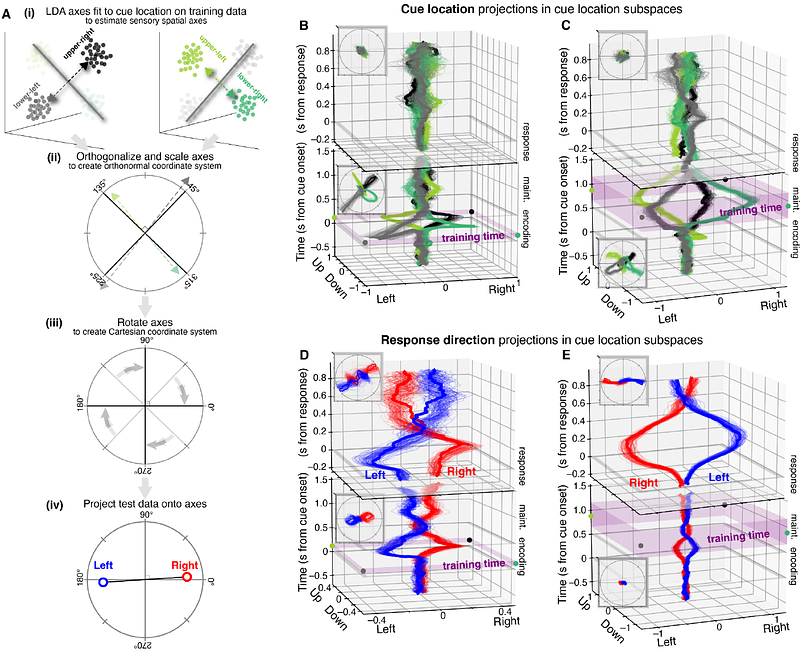Recycling of prefrontal subspaces dynamically multiplexes information

Recycling of prefrontal subspaces dynamically multiplexes information
Wentz, P. T.; Brincat, S. L.; Pasupathy, A.; Miller, E. K.
AbstractCortical spiking activity in areas like prefrontal cortex (PFC) encodes information only along a small number of dimensions, a subspace of the full space of population activity patterns. PFC often uses distinct subspaces to represent incoming sensory information and to maintain it in working memory. However, it\'s generally assumed that a subspace carries specific information within a specific time frame. Here, in two datasets, we show that neither assumption is correct. The same subspace used during initial encoding was later reactivated during the behavioral response. We also found that subspaces ostensibly dedicated to processing sensory information were recycled to represent behavioral response information later in a trial. We further found a consistent spatial mapping between the original subspace usage and its later recycling. These results demonstrate previously unknown flexibility of PFC subspace coding, both in the deployment of subspaces across time and in their multiplexing of information. This flexibility suggests that PFC subspaces function more like \"workspaces\" into which different types of information can be written.